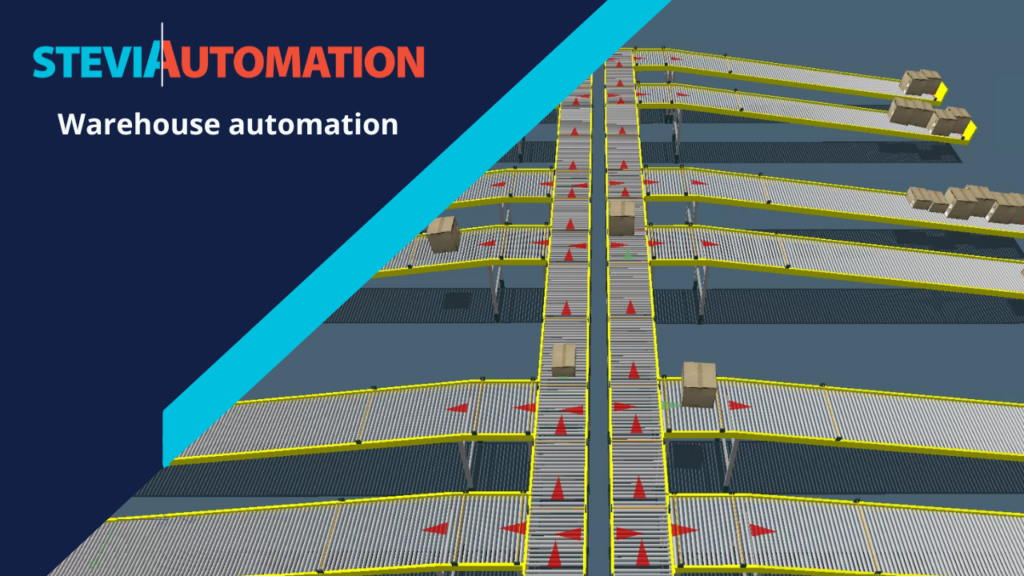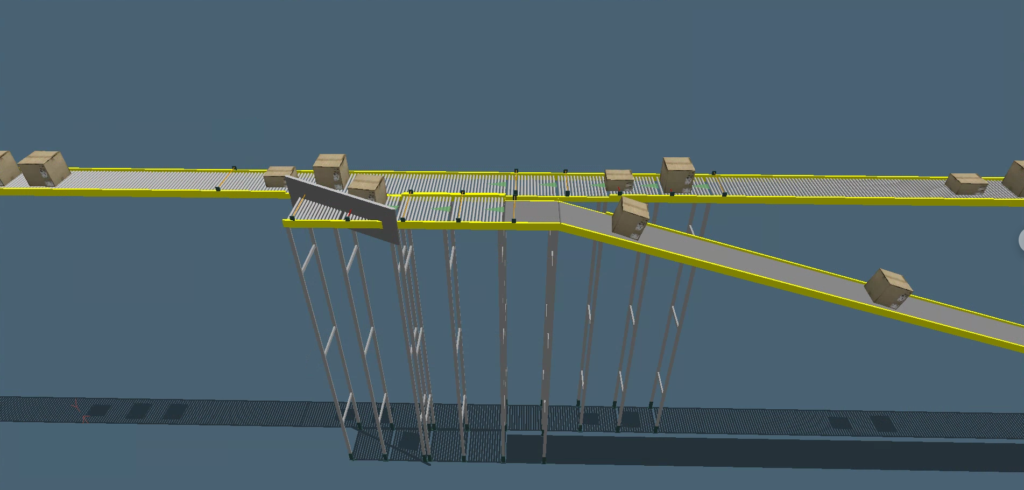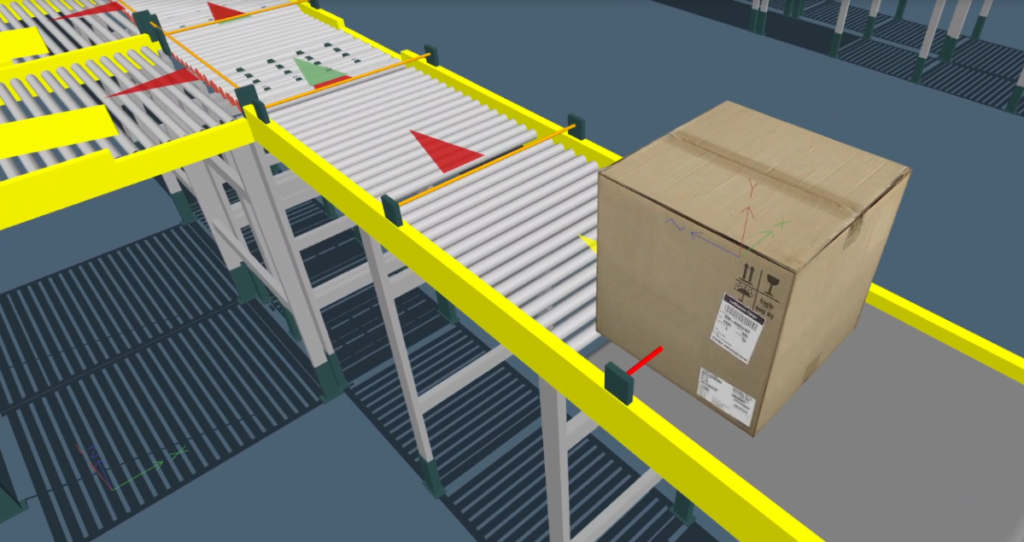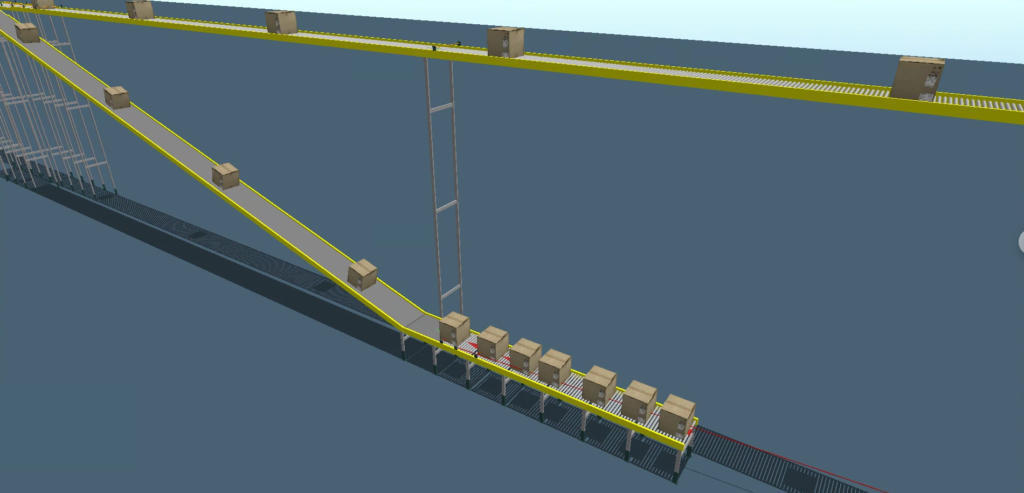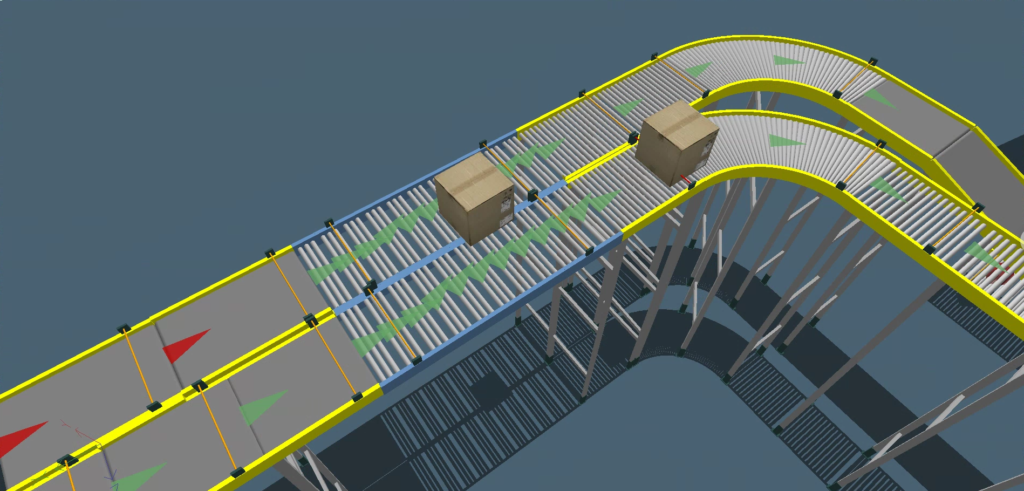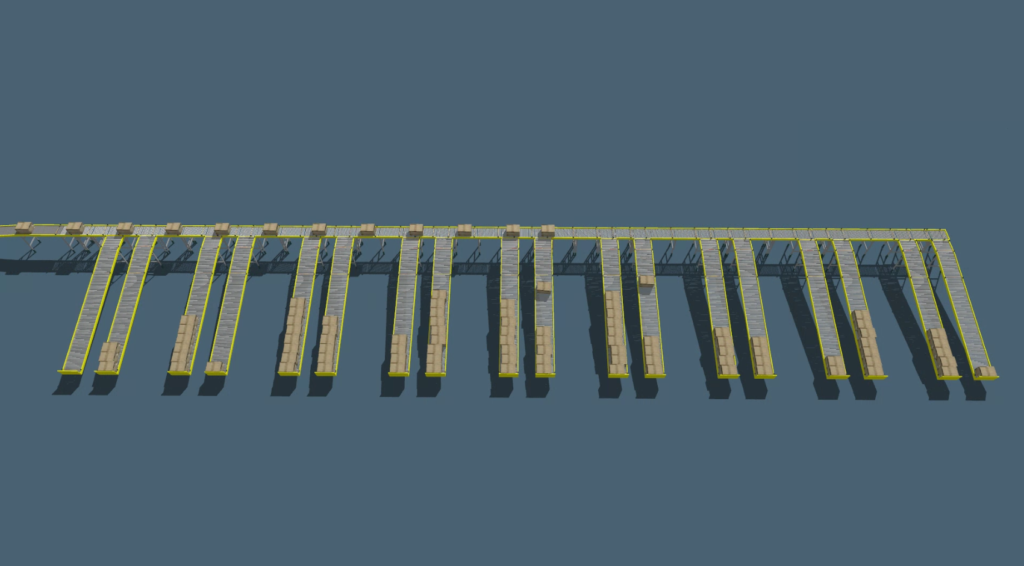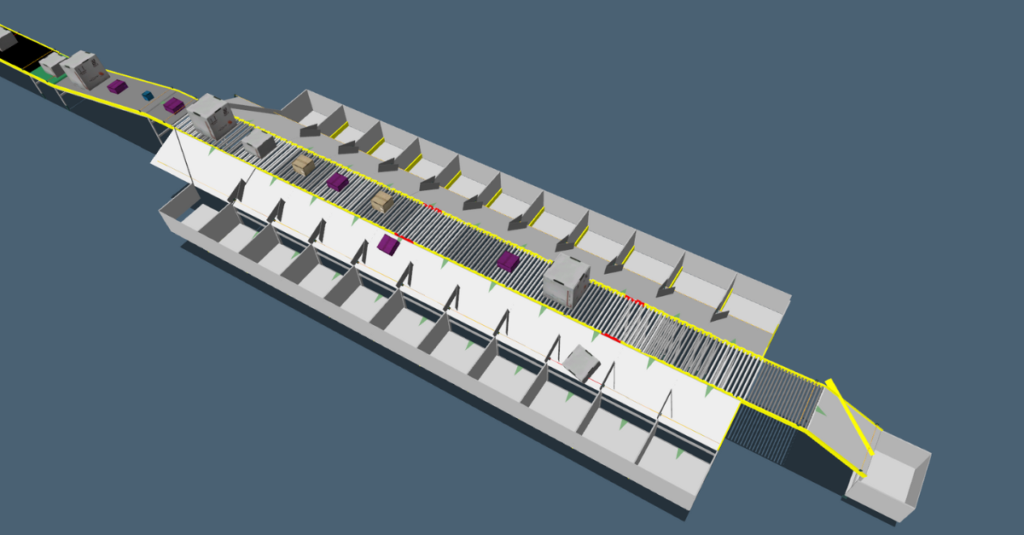The automation of warehouses is no longer limited to simply replacing human labor with machines. It is a comprehensive process that includes advanced technologies such as automation, information technology, and robotics, with the goal of creating more efficient, precise, and flexible logistics systems. Companies that can effectively implement automation solutions have the opportunity not only to enhance their competitiveness but also to improve customer service quality and optimize operational costs.
The following article describes the process of automation of a typical warehouse, where the transport and sorting of products take place. This study also includes a presentation of two typical variants of automated sorters that are usually deployed in warehouses.
The rapid growth of companies, for example in the e-commerce sector, is leading businesses to seek ways to automate their warehouses. They recognize that manually performing all warehouse operations poses many challenges, primarily related to extended order fulfillment times and increased risks of package or product loss.
Warehouses implementing automation are characterized by faster operation, accelerated delivery processes, as well as efficiency and accuracy in fulfilling each order. Thanks to automation, such a warehouse outperforms those that are not automated, achieving success in the competitive market. Warehouse automation allows improving existing procedures and operations, increasing the capabilities and throughput of the warehouse. It also improves the working conditions for warehouse employees, as products are automatically conveyed and sorted, reducing the complicated manual labor.
Before initiating the project, it is essential to develop the final concept of the system and make decisions about which devices best meet the investor’s needs. In the concept-building stage, the preparation of a visual project proposal plays a significant role, allowing for refinements or changes according to requirements. Following consultations and the development of the final version of the project, the implementation of the automated internal transport and product sorting system in the warehouse can begin.
Typically, the installation involves several warehouse halls and a sorting area. Products, packaged in containers such as cartons, are automatically transported from all the halls to the sorting area, where they are delivered to the appropriate destinations on the sorter. The control system reads the barcode placed on the packaging and, based on the available data, directs the product to the correct destination. The system is integrated with the Warehouse Management System / Warehouse Control System (WMS/WCS), allowing the Programmable Logic Controller (PLC) to know which destination to send the package to. The flow of products is continuously monitored with full tracking using optical sensors and cameras.
After defining the system requirements, a Functional Design Specification (FDS) document is prepared, providing a detailed description of the assumptions for the entire system. This document includes:
- description of the elements comprising the system, both mechanical and control system components,
- description of the products to be transported by the system, including information on dimensions, weight, etc,
- required throughput of the system,
- drawings and diagrams of the conveyor lines,
- scenarios of system operation and responses to exceptional situations,
- tasks for system operators,
- description of safety systems and their operation,
- implementation project schedule.
Once the document is ready and approved by the investor, the project executor can proceed with building the system, which consists of mechanical, electrical, and control system components.
For every implementation of a transport system, it is advisable to create a 3D simulation of the installation and virtually verify the correctness of the written software. Such tests provide the investor with the opportunity to validate the proposed system and analyze its functionality well before the physical installation and commissioning. During the Factory Acceptance Test (FAT) meeting, a virtual commissioning of the PLC controller and SCADA system (Supervisory Control And Data Acquisition) is conducted. These tools are connected to a virtual object with the purpose of performing real warehouse operations through programmed algorithms.
Following the FAT meeting, on-site work commences. The implementation begins with mechanical assembly and electrical work, including the installation of control cabinets. Subsequently, the control system is started up, and operational tests are conducted. At the end of the project final tests are performed, and operators are learning how to use the system. Depending on the investor’s needs, integrator companies may offer technical support during the initial months of the installation’s operation.
In warehouse logistics, a crucial process is the sorting of products. Below, we present two examples of an automated sorter, whose main task is to transport packages to the designated destinations, where the assembly of products for shipping to specific locations takes place. The control system identifies packages by scanning the barcode on them, and after communication with the Warehouse Management System, it can redirect the product to the appropriate discharge point.
The automated sorter is powered by input lines, which quantity depends on the required throughput of the system. The number of input lines, loading stations and destination points is always adjusted to the specific specifications and requirements of the investor. The lines are operated by workers at loading stations, and then all input lines are connected to the main line, which transports products to the sorter.
Fig. 5. Sorter in STANDARD version
The first version of the automatic sorter enables a product throughput of up to 2000 parcels per hour. The throughput can be increased by adding additional sorting lines. The sorter is constructed with roller conveyors that handle cartons, boxes, and trays. It is designed to sort products with dimensions ranging from 200x150x50mm to 800x800x800mm, weighing from 0.5 kg to 30 kg. The system determines the destination of the products by scanning the barcode label located at a defined position on the product.
Fig. 6. Sorter in ADVANCED version
The advanced version of the automatic sorter allows a product throughput of up to 5000 units per hour. This solution can handle cartons, boxes, trays, courier envelopes, and paper envelopes, and is adapted for products with dimensions ranging from 100x150x10mm to 800x800x800mm, weighing from 0.01 kg to 30 kg. Looking at these parameters, we can observe the difference between the advanced and standard sorters, characterized by increased throughput and accommodated product dimensions.
Typically, labels are scanned by a camera from a specific location on the box. If irregular packages, such as foil packs, need to be sorted, the system can be equipped with a scanning tunnel that reads the barcode label placed anywhere on the product.
Moreover, the tunnel is able to automatically read the dimensions of the package and can capture an image of each product. This type of sorter, due to its compact dimensions, can save a significant amount of space in the warehouse.
The implementation of a comprehensive control system in a warehouse brings numerous benefits, with each project tailored to the investor’s needs. The availability of many industrial automation devices available on the market allows for the automation of various warehouse operations. The presented sorters can be customized to specific requirements and the nature of a particular warehouse. Successfully implemented warehouse automation along with a control system allows for the optimization and improvement of warehouse processes, directly impacting the company’s competitiveness.
In the field of intralogistics, we have been successfully taking part in many projects, gaining extensive experience and knowledge. With over 10 years of experience, we have gathered our expertise by undertaking numerous projects in Poland and abroad, including our involvement in automating 22 Amazon warehouses across Europe. Despite occasional challenges in the supply chain, we are pleased to have successfully completed all our projects on time.
If you would like to learn more about warehouse automation, various sorter versions, and other services we offer, we invite you to contact us.


